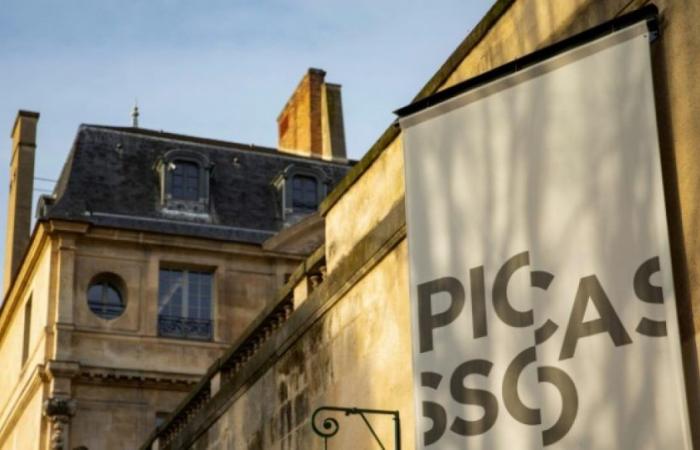
The Picasso-Paris museum is presenting from Tuesday an exhibition dedicated to the early years of a master of American painting, Jackson Pollock (1912-1956), marked by the influence of Pablo Picasso and Mexican muralists.
The first exhibition in France since 2008 on this representative of abstract expressionism and the triumph of American art at the turn of the Second World War, it presents “around a hundred works including around forty major paintings from the United States for the vast majority of them” and in particular from MoMA in New York, according to Joanne Snrech, curator of the exhibition.
Entitled “Jackson Pollock, the early years (1934-1947)”, it looks back at the beginnings of the artist’s career, marked by the influence of regionalism – an art close to territories far from big cities -, Picasso and Mexican muralists, up to his first “drippings” or paint projections which revolutionized the way of painting.
– Big brother –
“Picasso meant a lot to Pollock and a whole generation of artists. They never met but Jackson Pollock’s big brother, Charles (also a painter, editor’s note), sent him magazines in which Picasso’s work was reproduced. He will be the first intermediary between modern art and its little brother to whom he will, in a way, put his foot in the door,” according to the curator.
It was a 1939 exhibition entitled “Picasso: 40 years of his art” at MoMA, which then hosted “Guernica”, which seemed to have had “the strongest impact” on Pollock’s work, underlines Ms. Snrech.
The first part of the exhibition shows drawings and paintings by Jackson Pollock, taking up the motif of the mask or the bull, whose mimicry with those of Picasso is disturbing.
A series of drawings made by the American artist, suffering from bipolar disorder and an alcoholic, intended for his psychoanalyst as therapeutic support, constitute another astonishing testimony to the influence of the Spanish master.
Born in 1912 in Wyoming, a rural state in the west of the United States, Jackson Pollock is one of five brothers from a modest “very politicized” family, according to the commissioner.
He arrived in New York in 1930 and discovered a bubbling artistic melting pot that would launch his career after academic training at the Art Student League where his teacher, Thomas Hart Benton, inspired him to use rhythmic painting.
– Mexican muralists –
Charles and Jackson will also travel together to the United States to observe the great cycles of frescoes by Mexican muralists: Diego Rivera, David Alfaro Siqueiros and José Clemente Orozco.
At the beginning of the 1930s, they all benefited from numerous orders from the United States where they stayed, sometimes holding workshops, like Siqueiros with whom Pollock worked in the spring of 1936.
In January 1941, another MoMA exhibition devoted to Native American arts would also influence Jackson Pollock: more than a thousand works and objects were presented there, sand painting demonstrations were carried out by Navajo artists and a gigantic carved totem is erected outside. The painter will begin to work on the ground, also including totemic and shamanic motifs in his works.
The exhibition also shows the influence on the artist of European figures exiled in the United States during the Second World War and in particular that of the Surrealists: automatism, key for them, of artistic creation, will be taken up by the painter in all his work.
A room is dedicated to the artist’s meeting in 1942 with the collector and patron Peggy Guggenheim who opened a gallery in New York where she exhibited her rich collection of European avant-gardes alongside emerging artists including Jackson Pollock, ” turning point in his career”, according to the commissioner.
In 1944, MoMA bought his first work, “She-Wolf”, presented in the exhibition.
A final room is devoted to his evolution towards “drippings”, a multitude of paint projections, which are often reminiscent of calligraphy and which have made him famous worldwide.





